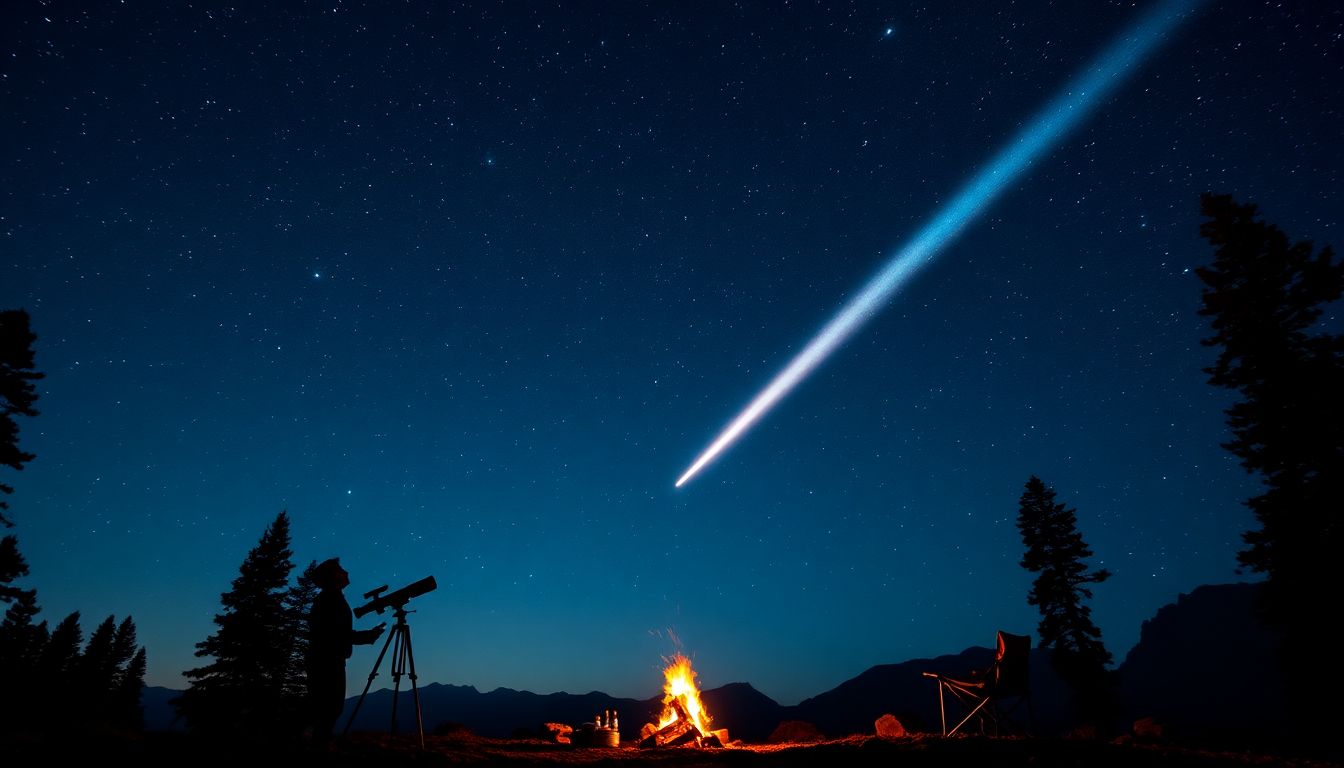
Where Is the Best Spot to See the Comet Tonight: A Complete Guide to Catching the Celestial Show
Introduction
Few sights in the sky can compare with the thrill of spotting a bright comet streaking across the night. These rare visitors from space dazzle us with their glowing tails and mysterious paths. To see a comet at its best, timing, location, and conditions matter a lot. This guide will help you find the perfect spot tonight to see the comet in all its glory. Whether you’re a newbie or an experienced skywatcher, you’ll learn how to get the best view possible.
Factors That Influence the Best Spot to View a Comet
Light Pollution Levels and Their Impact
Light pollution hides stars and comets from view. Bright city lights can make it hard to see faint objects in the sky. Use online maps or apps to find areas with little or no artificial light. Places far from city centers, like rural areas or mountains, offer better chances to see the comet clearly. For example, national parks often have dark skies perfect for stargazing. Planning your trip to these spots increases your chances of catching the comet’s full brilliance.
Weather Conditions and Cloud Cover
Clear skies are key to seeing a comet. Clouds or high humidity can block your view entirely. Check local weather forecasts before heading out. Apps like Clear Outside or Weather.com will tell you if it’s a good night for stargazing. The best time to watch is when the skies are dry and free of clouds. Usually, winter months in the Northern Hemisphere offer clearer skies, making winter a good season for comet viewing.
Geographical Features Enhancing Visibility
Elevated spots give a better view of the sky. Mountains or hills provide open horizons, reducing obstructions. Be near lakes or beaches, which often have wide, dark open spaces. These locations help you see more of the comet and its tail. Some famous dark sky parks are situated on high ground, offering excellent vantage points.
Timing the Observation
Timing is everything. Comets are often best seen just after sunset or before sunrise. Midnight can also be ideal when the sky is darkest. Keep in mind the moon phase, as a full moon can wash out dimmer objects like comets. Aim for nights when the moon is new or in a crescent phase. Use astronomy apps to track the comet’s path and find out when it will be visible.
Top Locations to See the Comet Tonight
National and International Dark Sky Parks
Dark sky parks are parks designated for their low light pollution. They’re perfect spots for comet viewing. Places like Jasper National Park in Canada or Death Valley National Park in the US are famous for their clear night skies. Before heading out, check the comet’s current position and plan your visit around peak visibility hours. Arrive early, and bring warm clothes, snacks, and a comfortable chair.
Urban vs. Rural Viewing Spots
Cities are usually full of lights that block the view of faint objects. Still, some urban spots like high rooftops, city parks, or observatories can work. For example, Griffith Observatory in Los Angeles offers great skyline views and telescopes. But for the best chance, look for rural areas outside the city. Remote farms, countryside, and national parks often have ideal conditions for spotting comets.
Famous Astronomical Sites and Observatories
Many observatories host special skywatching events for the public. Places like Griffith Observatory in LA or Kielder Observatory in the UK provide organized viewing nights. You can look through powerful telescopes and get expert guidance. These spots often host events when a comet is visible, making the experience more memorable.
Local Astronomy Clubs and Events
Joining a local astronomy club can be a smart move. Clubs often host free viewing nights and know the best spots nearby. Members share tips and experience to help you see the comet clearly. Check online listings or social media pages for scheduled events in your area.
Essential Tips for an Optimal Comet Viewing Experience
Equipment and Preparations
Beginner-friendly binoculars can show more detail than the naked eye. If you own a telescope, even a small one, it enhances your view. Download planetarium apps to help locate the comet in the sky. Pack warm clothes, a hat, and a blanket—nights can get chilly. Bring snacks, a flashlight with a red filter, and a comfortable chair to sit on.
How to Maximize Viewing Experience
Look for a dark, steady spot with free horizon views. Avoid full moon nights, as the brightness can hide faint details. Use apps that show the comet’s current position. For photography, use a tripod and long exposure shots to capture the tail’s beauty. Remember, patience is key—take your time and enjoy the quiet beauty of the night.
Ethical and Environmental Considerations
Respect nature and private property. Stick to designated paths and avoid disturbing wildlife. Pack out all your trash and leave the area as you found it. Keep noise levels down to maintain the peaceful atmosphere for others. Responsible stargazing helps keep these wonderful dark sky spots open for everyone.
Conclusion
Choosing the right spot to see the comet tonight depends on several factors. Light pollution, weather, location, and timing all play a role. Planning ahead and picking a dark, clear place can turn an ordinary night into a breathtaking experience. Use tools, check forecasts, and find an ideal vantage point nearby. Witnessing a comet is a rare gift—don’t miss the chance to see one of the sky’s most spectacular shows. Get out, look up, and enjoy the wonder of the universe.

